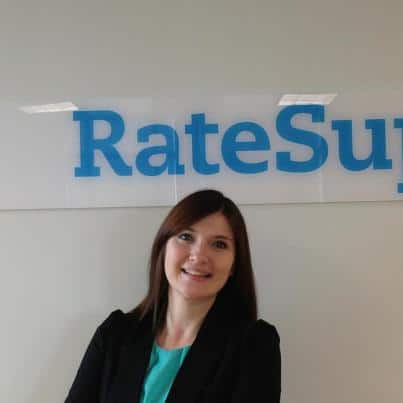For many of us, easy access to credit cards is a recipe for financial disaster. We interviewed Penelope Graham, Editor of RateSupermarket.ca, to find out how we get into debt, and how we can get out again.

SDTC: How do we get into trouble with credit card debt in the first place?
PG: We live in a society that places great importance on “having it all”. It takes only a glance on social media to see (and covet) the consumer goods, travel, lifestyle, that our peers appear to be experiencing. For many young people living away from home for the first time, the temptation to rely on credit for life’s extras – or even just to make ends meet – can be overwhelming. It’s easy to be undisciplined with credit cards; they are readily accessible, and people generally aren’t educated about responsible use. Using credit is not free money – it is borrowing from your future self.
Are we in denial about the amount of credit card debt we have?
Using consumer credit has become extremely commonplace in our society. All of life’s big milestones, such as buying a home, car, or planning a wedding, require going into debt. An “everybody’s doing it” mentality prevails. As carrying a credit card balance is the norm, cardholders may not realize that their own is cause for concern. And, as talking about money is still considered a socially taboo topic, many likely don’t realize how their debt levels compare to those of their peers. Our recent study on debt denial found that 27.5% of Canadians are wrong about how their debt stacks up to the national average.
OK. What steps can we take to pay down our debt?
Step 1: Face the numbers. Our Debt Denial Study finds 42% of those who think their credit card debt is average actually owe more than the norm. It’s tempting to hide from it, but it’s so important to know exactly where your debt stands. Tally up all the numbers – from your credit card, line of credit, car payments, etc. Find that total debt amount.
Step 2: Divide and conquer: Make paying your highest interest-incurring debt your first priority; the longer that debt exists, the more you’ll pay over time. For most people, this is their credit card debt.
Step 3: Make a timeline: Make a dedicated plan to paying off your debt; determine what you can pay towards each debt type monthly, and calculate when you’ll have it paid off completely. Having a finish line in sight can be inspiring, and can help you commit to living frugally in the meantime to accomplish your goal.
Step 4: Switch things around: There are a few different products available to aid in debt repayment. For example, switching your existing balance to a credit card with a low balance transfer feature can help give you a break on interest and lets you pay down the principal.
If possible, swapping to a different debt instrument can help fix your credit score. Credit cards are what’s called “revolving debt” – they never have to be paid off, and are considered higher risk by credit bureaus. If possible, moving your debt to a line of credit with a final due date can improve your credit score, because you’ve lowered your overall borrower risk profile. Talk to a financial advisor about exploring your options.
Step 5: Ask for help: If your debt goes beyond a payback plan you can commit to, it’s important to seek help. Talk to a financial advisor; they can help you navigate the options available to you, and help you create a plan that will work for your finances and minimize the debt damage.
What about those who are underemployed/unemployed? How can they get a grasp on their debt?
It can be very challenging to make debt a priority when you don’t have a regular income. The first step in this situation is to prioritize the different forms of debt you may have, and to explore your options. For example, not paying at least the minimum payment on your credit card will have lasting consequences for your credit score and will impact your future ability to borrow. If you have a student loan or line of credit, you may be able to defer your payments for a time, or work out a more manageable payment schedule with your lender. It’s important to communicate your situation to your lender and to reach out for help if you need it – a financial advisor can help you make a plan to keep your debt manageable while you search for work.
How exactly does the credit card debt calculator work?
The RateSupermarket.ca Credit Card Debt Calculator is designed to show you exactly how much your credit card debt will cost you over time. Users enter info about their current balance, how much they can afford to pay toward their balance monthly, and whether they intend to keep using their card. Their results will show them the timeline required to pay off their credit card, and how much interest they’ll incur in the meantime. What’s really unique about our calculator is it sounds the alarm if you have too much debt to handle, or if you need to commit more to paying off your debt.
Debt often seems overwhelming. What are some good things to keep in mind?
As mentioned, it’s really important to reach out to a financial advisor or credit counsellor if your debt is too much to handle through traditional payments and frugal living. The biggest mistake you can make is to hide from your debt; it’s not going away, and will shred your credit score in the meantime. Your goal when facing a lot of debt is to protect your score, and your ability to borrow later for a mortgage car, etc., as much as you can.
Penelope Graham is the Editor of MoneyWise, RateSupermarket.ca’s learning resource and blog. RateSupermarket.ca is Canada’s comprehensive financial rates comparison site, offering consumers transparent access to the best mortgage rates, credit cards, GICs, insurance and more.



 Follow Us On Instagram
Follow Us On Instagram
